What is water?
Scientific Definition:-Water is a substance composed of the chemical elements hydrogen and oxygen and existing in gaseous, liquid, and solid states.
General Definition:-Water is a clear thin liquid that has no colour or taste when it is pure. It falls from clouds as rain and enters rivers and seas. All animals and people need water to live.
Availability of water on Earth
- Nearly 97% of all water present on earth is salt water that is not suitable for drinking.
- 3% of water is freshwater out of 100%.
- In that only 0.5% is suited for drinking and the remaining is found in glaciers, atmosphere, soil, etc. that cannot be consumed.
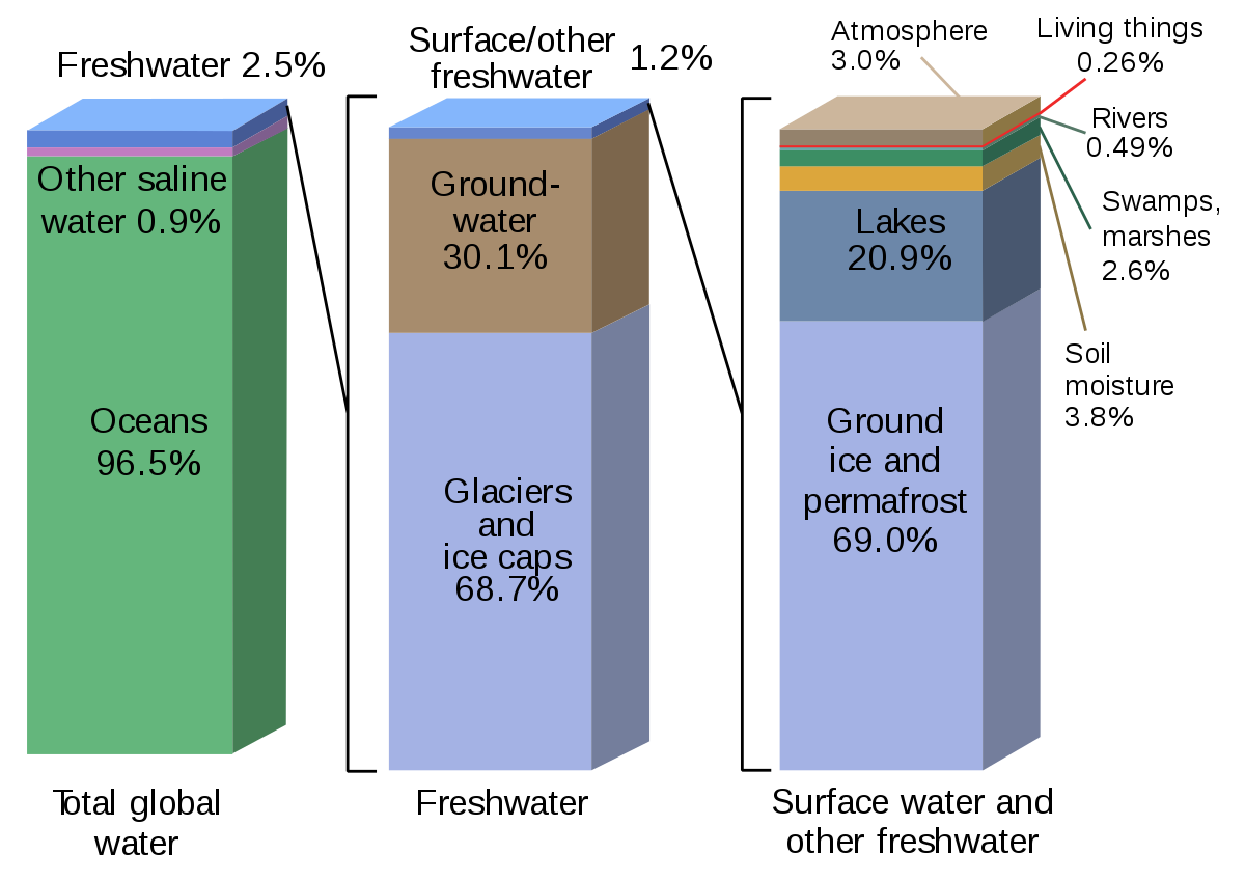
Definition:-The water cycle shows the continuous movement of water within the Earth and atmosphere. It is a complex system that includes many different processes. Liquid water evaporates into water vapor, condenses to form clouds, and precipitates back to earth in the form of rain and snow.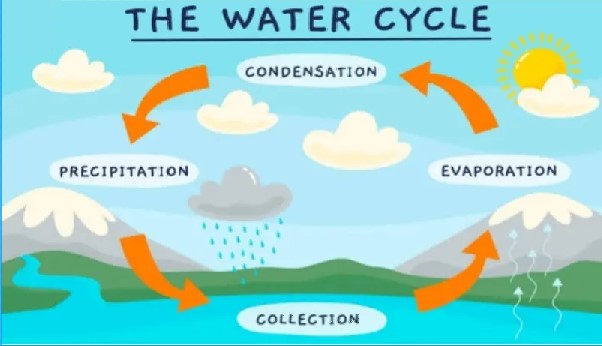
Definition:- Water conservation is the practice of using water efficiently to reduce unnecessary water usage.
Simple ways to conserve water at home:-In kitchen
- Use a washing up bowl.
- Recycle wastewater.Like if you clean vegetables with water in a bowl use that water only for cleaning the utensils also.
- Don't let water out if there is no work with that.
- Do not use running water for cleaning food items.
In washroom:-
- Take shorter showers.
- Turn off the tap when not in use.
- Check for leaks in the washroom.If the leaks are present in the washroom rectify it immediately.
- Avoid using toilets as ashtray or wastebasket.
- Use minimum quantity of water for each laundry.
- Go for low-flush toilets.
In garden and outdoors:-
- Save water while washing the car.
- Ask children not to play with the water pipes and sprinklers.
- Use swimming pool covers in swimming pool.
Water conservation projects can be done anywhere and in any kind of structure. Here are different water conservation methods where major savings can be done.
Methods of water conservation:-
- Rainwater harvesting:-
- Rain water is collected and allowed to filter gradually into a deep pit or a reservoir.
- So that it seeps down and improves the ground water table.
- Water metering:-
- Install water meters and measure the amount of water that is being used in residential and commercial buildings.
- Pressure reducing valves:-
- A pressure reducing valve basically controls the amount of pressure in a hydraulic system.
- In this way water consumption is also reduced.
- This is a very efficient solution for water conservation in industrial, residential, commercial and institutional buildings.
- Water efficient bathroom accessories:-
- Water-efficient toilet tanks, taps and shower heads that can cut water consumption up to 60%.
- Innovations, such as change in spray patterns in taps and showers and increased pressure for flushing in toilets.
Rapid urbanization and water pollution have been severely impacting the quantity and quality of surface and groundwater in several parts of India.The country’s agricultural system is still largely dependent on rainfall. Given the changing rainfall patterns, the government has been considering the revival of traditional water conservation methods.
Different traditional methods of water conservation in India:-
- Talabs/Bandhis/Ponds
- Talabs/Ponds/Bandhis are reservoirs to store water for drinking and household consumption.
- These ponds may be natural or manmade.
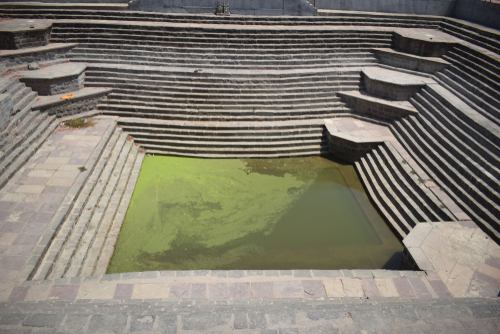
Pond/Bandhi/Talab
- Jhalaras
- Jhalaras were human-made tanks, found in Rajasthan and Gujarat, essentially meant for community use and for religious rites. Often rectangular in design, jhalaras have steps on three or four sides. Jhalars areground water bodies which are built to ensure easy & regular supply of water to the surrounding areas .
- The water seepage from a lake or an upstream reservoir gets collected in these stepwells.
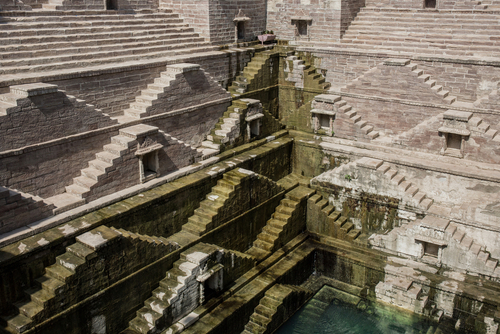
Dried Jhalara
- Baolis
- A baoli is a reservoir in which water can be stored. It is also a source of ground water. Numerous tanks and baolis were commissioned by the ruling clans in which water was collected mainly during the rainy season and was then used throughout the year by the people in the neighbourhood.
- Baolis are open to people of all sections of the society.
- Baolis are stepwells that were beautifully designed with arches and motifs(patterned images).
- These Baolis can use for social gatherings.
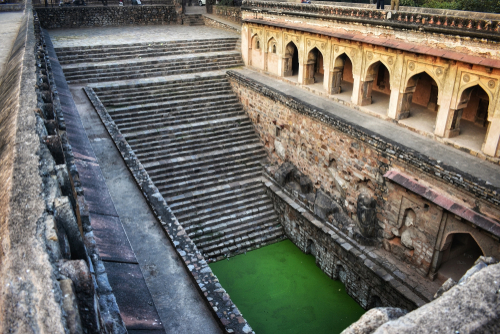
Baoli
- Bamboo drip irrigation system
- Bamboo drip irrigation has been practiced in northeastern parts of the country.
- It is an over 200-year-old technique developed by tribal farmers for irrigating terrace fields. In this system, water from springs is transported using bamboo pipes.

Bamboo Drip Irrigation System
Why is water conservation important?
Answer:- An average person utilises about 140 litres of water per day. Lack of water on a large scale can lead to serious water scarcity issues. Water conservation is important for several reasons.They are:-
- Water distribution is uneven and therefore, large parts of India remain deficient in rain, as well as groundwater.This unequal distribution across the country, makes most of the population face water scarcity.
- The requirement of water in urban areas is higher than the availability. Moreover, water conservation will ensure availability of clean water for future generations. This can be done by ensuring that the consumption of freshwater from an ecosystem does not exceed its natural rate of renewal.
- Since rainfall in India is highly seasonal.Water is required to irrigate crops. Water protects the ecosystem and wildlife.
- Moreover, conserving water also saves energy. That is, by using smart appliances which are water and energy-efficient, we can reduce water usage and save energy too. Energy is essential to filter, heat and pump water in households.
- Water conservation also saves finances. Installing a water meter at home will enable use of less water, and lead to lesser charges by the water supply company.
- Lesser consumption of water will maintain more water in the environments and help sustain the wetland habitats for plants, wildlife and aquatic life. It is especially important during dry seasons.
- The extraction of freshwater from the icebergs has increased significantly in recent years. The demand for water has also gone up to a great extent, including the need for power supply water-based power generation.
Uses of water
- In Agriculture
- In Industries
- Production of electricity
- In Bathing
- In washing clothes and others
- In Baking
- In vehicles & Batteries
- In cooking etc...,
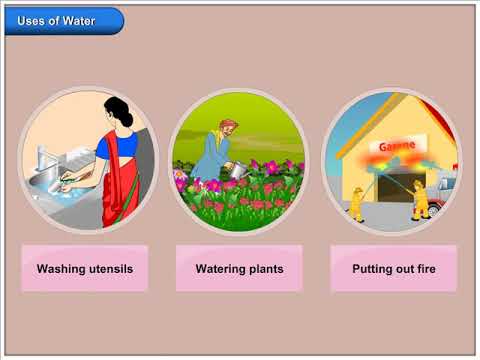


- Rain water is collected and allowed to filter gradually into a deep pit or a reservoir.
- So that it seeps down and improves the ground water table.
- Install water meters and measure the amount of water that is being used in residential and commercial buildings.
- A pressure reducing valve basically controls the amount of pressure in a hydraulic system.
- In this way water consumption is also reduced.
- This is a very efficient solution for water conservation in industrial, residential, commercial and institutional buildings.
- Water-efficient toilet tanks, taps and shower heads that can cut water consumption up to 60%.
- Innovations, such as change in spray patterns in taps and showers and increased pressure for flushing in toilets.
- Talabs/Ponds/Bandhis are reservoirs to store water for drinking and household consumption.
- These ponds may be natural or manmade.

- Jhalaras were human-made tanks, found in Rajasthan and Gujarat, essentially meant for community use and for religious rites. Often rectangular in design, jhalaras have steps on three or four sides. Jhalars areground water bodies which are built to ensure easy & regular supply of water to the surrounding areas .
- The water seepage from a lake or an upstream reservoir gets collected in these stepwells.

- A baoli is a reservoir in which water can be stored. It is also a source of ground water. Numerous tanks and baolis were commissioned by the ruling clans in which water was collected mainly during the rainy season and was then used throughout the year by the people in the neighbourhood.
- Baolis are open to people of all sections of the society.
- Baolis are stepwells that were beautifully designed with arches and motifs(patterned images).
- These Baolis can use for social gatherings.

- Bamboo drip irrigation has been practiced in northeastern parts of the country.
- It is an over 200-year-old technique developed by tribal farmers for irrigating terrace fields. In this system, water from springs is transported using bamboo pipes.

